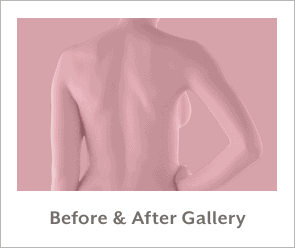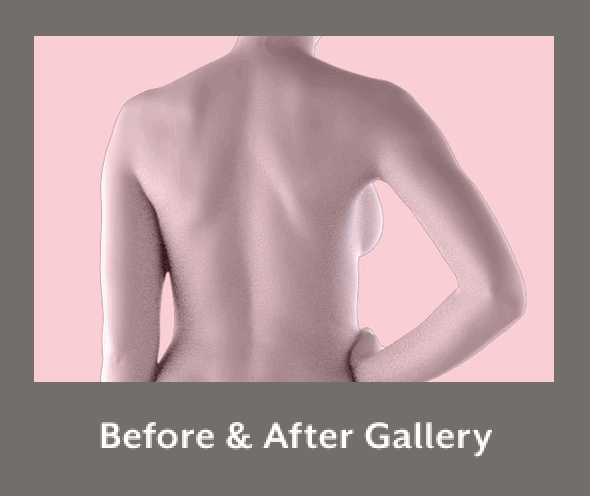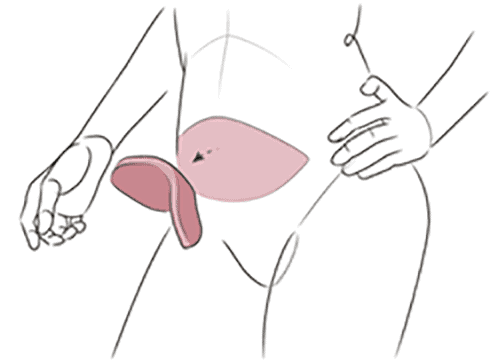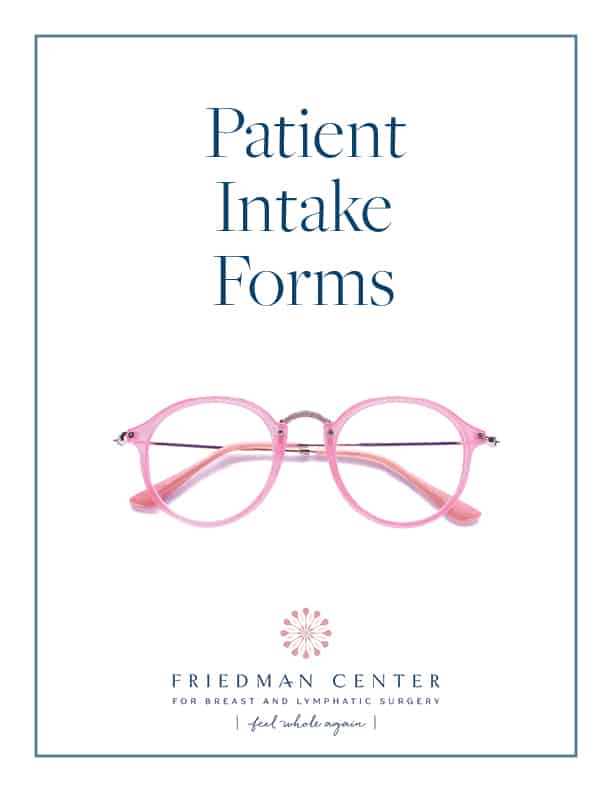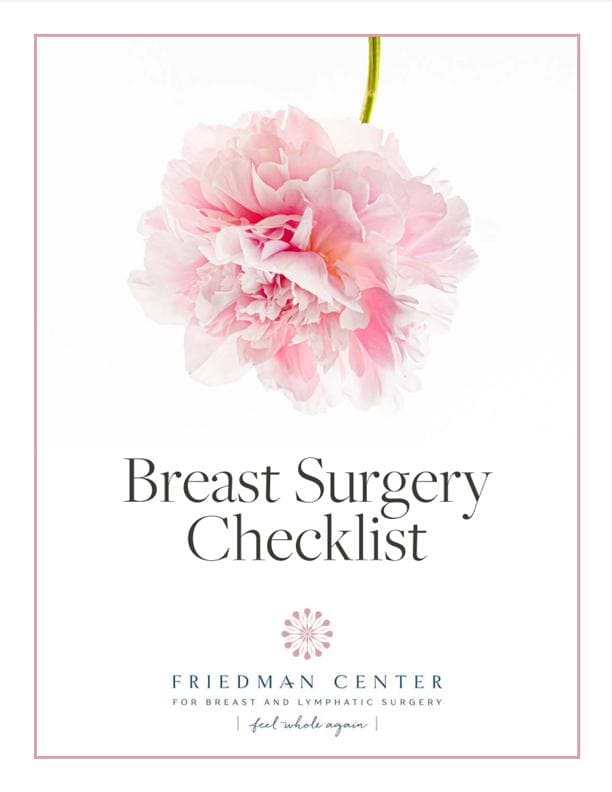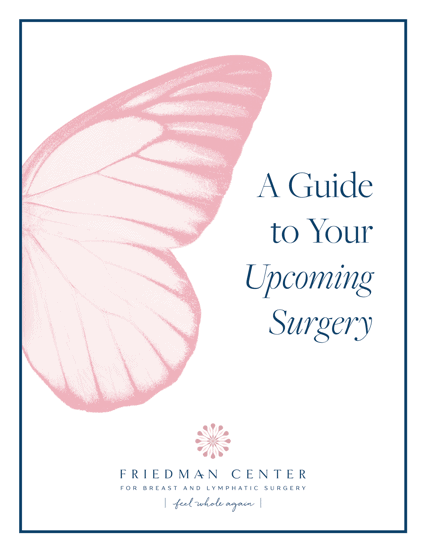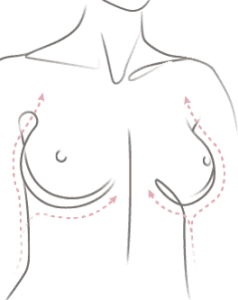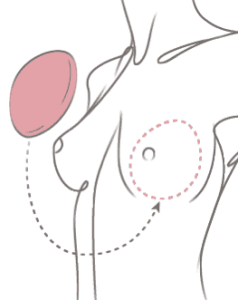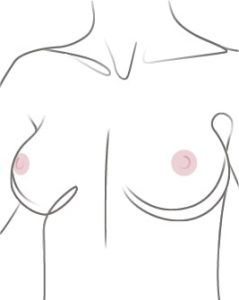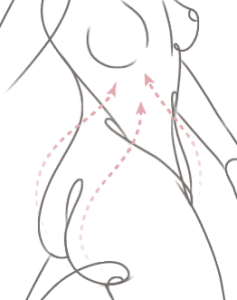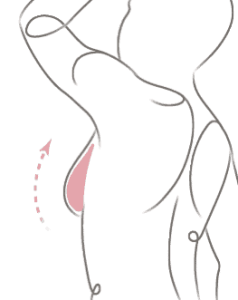Revisions & Enhancements » Nipple & Areola Procedures
Nipple & Areola Procedures
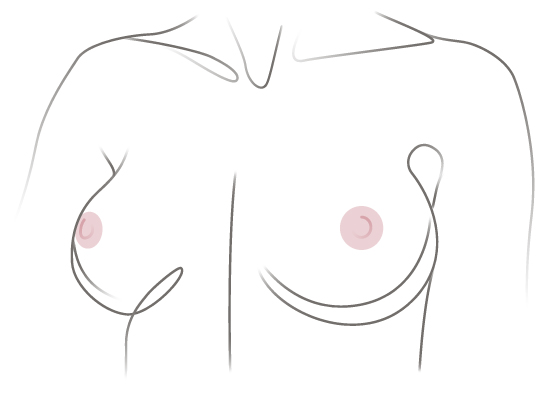
On this page

On this page
The nipple and areola (the colored area surrounding the nipple) are very important parts of the breast’s appearance. Thanks to the increasingly popular nipple-sparing mastectomy technique, some patients may not need to recreate the nipple and areola after mastectomy.
The nipple and areola can be left in place, and the breast skin can be used to contain the tissue or implant for the reconstructed breast. If the nipple and areola must be removed as part to the mastectomy, then surgical nipple reconstruction, 3D tattooing, or a combination of these techniques can create natural-looking nipples and areolas.
Nipple-Sparing Mastectomy
Nipple-sparing mastectomy, a variation of skin-sparing mastectomy is one of the most commonly performed types of mastectomy. The breast’s skin, nipple, and areola are left in place, and the appearance of the breast after mastectomy is considered the gold standard of breast reconstruction.
While many women are eligible for nipple-sparing mastectomies, women who have inflammatory breast cancer, a tumor involving the nipple, or cancer-related nipple discharge may not be good candidates for the procedure. Fortunately, there are other options available, including nipple & areola reconstruction and tattooing.
Nipple Reconstruction and Tattooing
Studies have shown that women who have lost their nipple and areola due to breast reconstruction or for other reasons often continue to experience psychological distress, even after the breast mound has been rebuilt. Creating a new nipple and areola can be important not only for the appearance of the breast, but also for your emotional well-being. It can give you a sense of completeness in your recovery from breast cancer.
Not every woman decides to have surgical nipple reconstruction, though. Some women choose to leave the breast as it is, and others prefer to have tattooing alone done to create the look of the nipple and areola. The choice is yours.
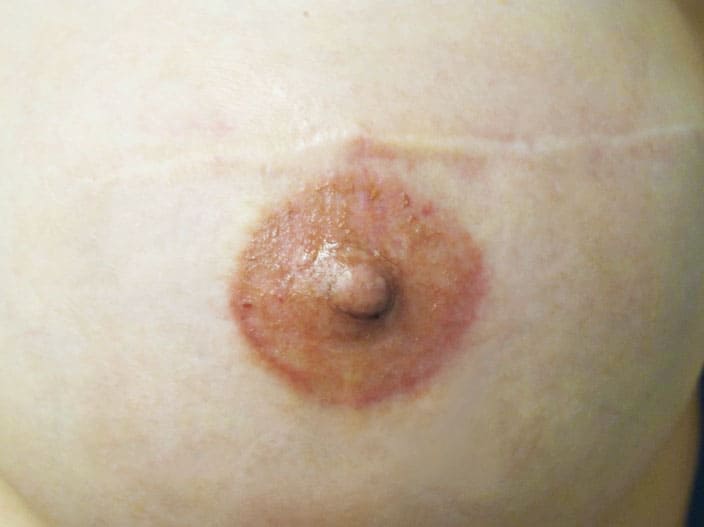
Surgical Nipple Reconstruction
Surgical nipple reconstruction is generally the final step in breast reconstruction, done about 3-4 months after the creation of the breast mound. It’s usually performed as an outpatient procedure, not in a hospital, under local or general anesthetic.
Most commonly, the nipple is reconstructed using the breast skin surrounding the nipple site. Skin can also be taken from other areas of the body such as the inner thigh, stomach, or buttock. An incision is made and the skin is formed into a nipple shape. Small stitches help the new nipple to keep its form. Acellular dermal matrix or your own fat or scar tissue may be used to create volume and projection in the nipple. A small protective covering is placed over the nipple area until the skin has healed. Surgical nipple reconstruction is a short outpatient procedure.
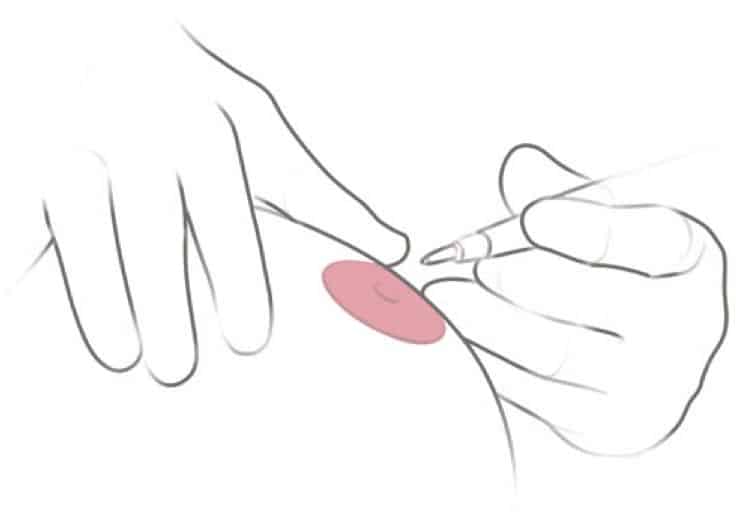
A surgically recreated nipple will be the same color as the skin surrounding it, and it won’t have an areola. Medical tattooing embeds pigment in the nipple and the surrounding area to create the realistic appearance of a nipple and areola. Or, if the patient has decided not to have surgical nipple reconstruction, tattooing can create the illusion of a nipple and areola on flat skin.
Two types of tattooing may be done to create the nipple and areola:
- The most common method of tattooing performed in medical offices is to give color to reconstructed nipples and areolas. In this traditional form of tattooing, a vibrating probe is used to drive add pigment into the skin.. While it’s the simplest form of medical tattooing, there are some drawbacks. The colors available are limited, several tattooing sessions may be needed, and the tattoos tend to fade over time.
- 3D tattooing is the most advanced form of medical tattooing today and is done by professional medical tattoo artists. It can be used to permanently pigment the reconstructed nipple and to create the look of the areola. For women who decide not to have surgical nipple reconstruction, 3D tattooing can provide the illusion of nipple projection on flat skin.
In 3D tattooing, oscillating needles are used to embed pigment in the skin. There are a number of advantages to 3D tattooing. A large range of colors is available, usually only one session is needed, and the tattoos seldom fade.
The Friedman Center has on-site and off-site resources available for state of the art medical tattooing. Tattooing can be done in our office, or we can refer you to an artisan medical tattoo professional. Some women choose to have other images, like flowers or stars, created at the nipple site to celebrate their recovery from breast cancer.
Nipple prosthetics are an option for women who might not want further surgery or tattoos to create a nipple. Nipple prosthetics resemble the look and feel of real nipples and can be adhered to your breasts when you choose. They are temporary and can be removed at any time.
Things to Consider
If the breast skin is damaged, for instance by radiation treatment, there’s an increased risk of complications with nipple reconstruction. Factors such as changes in scar tissue and thickness can also impact nipple reconstruction. Poor blood supply and smoking also increase the risk of complications. The types of complications can result in partial or total loss of the nipple or loss of nipple projection.
How long nipple and areola tattos last can vary a great deal from person to person. Certain pigments may fade or darken over time, changing the look of the nipple and areola.
Additional Choices and Alternatives
Your surgeon may recommend one or more revision and enhancement procedures to give you the best possible results for your breast reconstruction. Your personal preferences play an important role in decision-making about the final aesthetic outcome.























